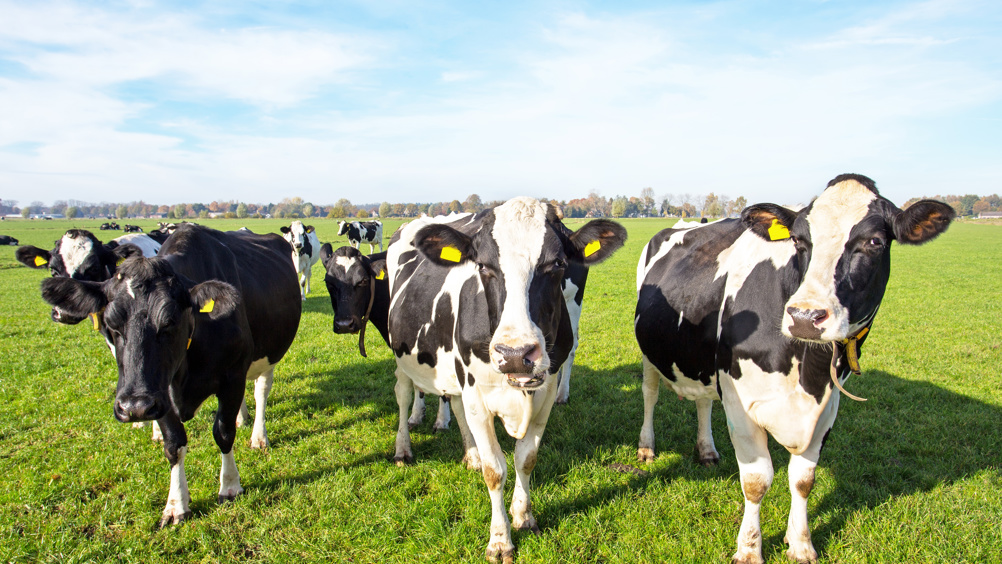Bovine respiratory disease (BRD) or pneumonia is a cause of major economic loss for the cattle industry with estimates for the annual cost of the disease running to more than £60 million. The initial costs of a case of pneumonia have been estimated at around £43 in a dairy calf or £83 in a beef calf, these costings include the cost of treatment and the immediate check in growth rates. The long-term costs of the case can be far more significant, with estimated overall costs closer to £772 for a dairy heifer by the time you factor in the delay to first calving, reduction in first and second lactation milk yield and the increased risk of culling.
Recently there has been increasing interest in the use of thoracic ultrasound as a tool for diagnosis of BRD and veterinary surgeons are now using it for several different purposes:
- Increasing the reliability of BRD diagnosis, especially in cases where there are few other clinical signs
- Assessing recovery post treatment
- Assessing the ability of farm staff to accurately identify BRD
- Detecting calves in the early stages of disease
- Ruling out chronic BRD in cases of poor growth rates and ill thrift.
Ultrasound has also been used as a screening tool for future performance. One study used ultrasound to screen heifers at 60 days of age for lung lesions and then followed them through into their first lactation. Heifers found to have lung damage on their initial ultrasound scan had a higher age at first calving and were more likely to be lost from the herd. Additionally, heifers with lung damage identified on ultrasound had a tendency for lower pregnancy rates to first service than heifers without lung lesions.
To minimise the impact of BRD on farm there are two areas that must be focused on:
- Rapid identification and treatment of affected animals
- Disease prevention.
Rapid identification and treatment
Treatment will be most effective if it is given as early as possible in the course of a disease. Traditionally the diagnosis of pneumonia is based on visual signs of respiratory disease (e.g. reduced feed intake, depression, nasal and ocular discharge, cough, and altered ear position), and potentially an increased rectal temperature. Simple observations do not pick up all cases; studies in abattoirs have found lung lesions in animals with no history of being treated for respiratory disease and these high-light the need for better disease identification on farm. Technology is beginning to be implemented as a means of speeding up the detection of BRD. One area of particular focus has been temperature monitoring, either using direct monitoring devices such as reticulo-ruminal boluses and eartags or through remote technology such as infrared thermography. Having identified diseased animals it is important that the correct treatment is quickly administered. Treatment success is determined in part by how rapidly it is administered so farms should agree treatment protocols with their veterinary surgeon and ensure that the whole farm team knows what they are and when to use them.
Disease prevention
While maximising treatment efficacy it is important the goal should always be disease prevention. BRD is a multifactorial disease complex, and it is important to consider all the potential risk factors when looking at control programmes. Table 1 highlights several of the key areas to consider.
Table 1. Key areas to consider when optimising BRD prevention
| Factor | Examples |
|---|---|
| Maximising immunity |
|
| Manage any stressful periods |
|
| Optimise the environment |
|
Vaccines can play a key role in the prevention of BRD. There are several different vaccines available, so it is important to select the correct product based on the specific risk factors and organisms seen on an individual farm. To ensure the best response, vaccines should always be given to healthy animals prior to the risk period for disease. Farmers should work with their veterinary surgeons to design bespoke vaccination programmes for their farms and always follow instructions with respect to the administration and storage of products.
BRD is an extremely costly condition, and all producers should think about how to prevent it and know how to rapidly identify and treat it. BRD can cause irreversible damage to the lungs, meaning that even if an animal recovers its lifetime performance will suffer and it will be more susceptible to future disease challenges.


